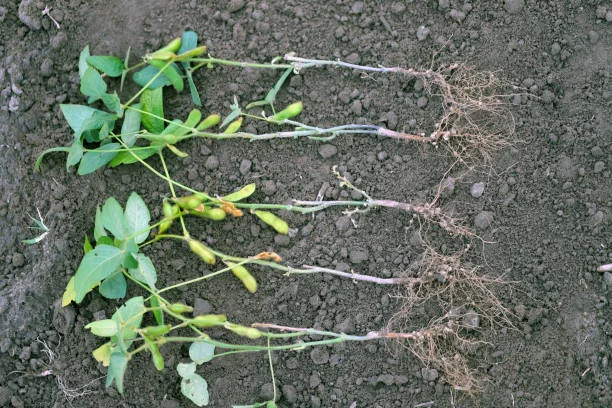Fusarium root rot presents a widespread danger to soybean cultivation since it leads to substantial harvest yield reductions and affects crop quality. Fusarium root rot demonstrates the critical need for successful sustainable management approaches because it represents a severe soil-borne disease. Trichoderma harzianum stands out as a beneficial fungus which scientists now recognize as a natural solution against agricultural threats. The research examines Fusarium root rot development factors together with its symptoms before explaining how Trichoderma harzianum functions as a biological control solution for Fusarium Root Rot in Soybeans.
Understanding Fusarium Root Rot
Fusarium solani among other Fusarium species acts as the primary causal agent of root rot that affects soybean plants. Through the roots this pathogen enters the plant system which starts a destructive sequence of biological damage. Fusarium solani spores maintain high survival rates in the agricultural soils thus creating a chronic problem for growers who cultivate soybeans. Fusarium root rot develops most commonly under damp and chilly soil conditions that affect stressed plant systems from waterlogging or damage by compaction together with chemical disruptions.
Expand your perspective with this must-read related post waiting to inspire you.
Identifying the Symptoms
The signs of Fusarium root rot make measurement simple for diagnostic purposes. Soybean plants that become infected show several negative signs including poor vigor combined with stunted growth. Reddish-brown lesions become visible on roots although they can eventually become worse as the rot progresses. When Fusarium infects the plant it causes foliage symptoms through wilting and yellowed leaves because the pathogen prevents water and nutrient transportation. Fusarium proliferation tends to follow specific soil conditions which create patches where the infection emerges.
Biological Management with Trichoderma harzianum
In the context of sustainable agriculture, biological control agents like Trichoderma harzianum offer promising alternatives to chemical fusarium root rot treatment. Trichoderma harzianum occurs in nature within plant root areas called rhizosphere as it establishes beneficial biological ties with root systems. The relationship between the plant roots and Trichoderma harzianum shows various biological interactions that suppress Fusarium pathogens from growing.
Trichoderma harzianum Fungicida: A Role Model in Biological Control
Trianum Shield from Novobac represents the most powerful commercial product which utilizes Trichoderma harzianum. Novobac markets Trianum Shield as a bio-fungicide which has exclusive properties against Fusarium wilt therefore making it the best choice to fight Fusarium root rot infections in soybeans.
Trianum Shield enters the root zone then occupies available space as well as resources that pathogenic fungi normally use to survive. Trianum Shield produces enzymes as well as secondary metabolites which strongly inhibit Fusarium growth. The microorganism Trichoderma harzianum enhances plant immunity thus making them stronger against pathogen attacks. The combined strategy achieves multiple benefits for reducing disease effects and enhancing both plant health status and productivity.
Chemical Controls versus Biological Solutions
The agricultural sector made an agricultural change by moving past chemical fungicides toward environmentally friendly bio-fungicides during recent years. Modern agricultural practices adopt Trichoderma harzianum as a solution in disease management strategies. The fast results provided by chemical solutions lead to environmental issues and pathogen resistance formation. The application of Trichoderma harzianum creates sustainable benefits for the environment because it avoids chemical-based drawbacks.
Implementing Trichoderma-Based Solutions
Farmers who want to use Trichoderma harzianum in their crop management require a set of precise application instructions. The optimal results from Trianum Shield require farmers to follow instructions provided by Novobac correctly when applying the product. Trianum Shield serves as a protective agent against Fusarium infection by entering the soil space before planting or by treating seeds directly.
The Future of Soybean Cultivation
Biological control methods in agriculture demonstrate an increased potential for future growth. Biological organisms including Trichoderma harzianum help farmers develop sustainable cropping systems which manage to retain crop resilience. Introducing chemical input reduction strategies enables farmers to protect their soil ecosystems together with plant species diversity and maintain their harvest quality against Fusarium root rot threats.
Conclusion
Sustainable soybean farming against Fusarium root rot has become achievable through the use of Trichoderma harzianum as an innovative intervention. The application of Trianum Shield has established a new farming standard that unifies biological controls with sustainable farming practices. The agricultural industry continues to welcome these natural partners which creates a concrete prospect for healthier soybeans with better resistance.
Today’s featured post reveals something extraordinary—click to experience it now.






